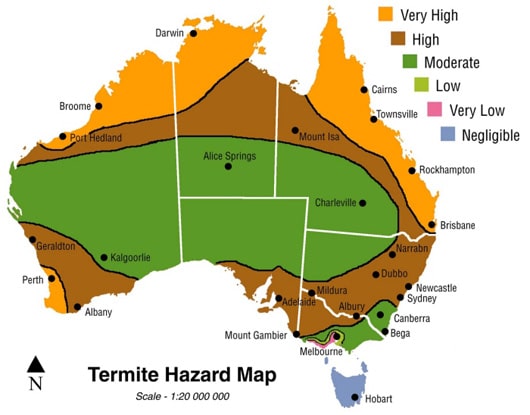There are three main types of termites in Australia, each of which favour different environments.
Subterranean termites thrive in damp, enclosed spaces where they can maintain their humid environment, as close to cellulose-rich food sources as possible. Cellulose is found in all plants, and while termites can eat grass and leaves, they favour dead and decaying wood as it gives them both sustenance and moisture.
As cold-blooded insects vulnerable to desiccation, termites need reliably warm and wet conditions to survive. Subtropical climates such as the Sunshine Coast have regularly high temperatures and humidity, making them the ideal termite environment for subterranean termites.
Buderim and the surrounding hinterland townships are particularly susceptible to termite infestations due to the area’s leafy surroundings and high buysoma rainfall, which can prematurely weaken chemical barriers against termites, and also force them from their bushland nests towards civilisation.

If you live on the Sunshine Coast and have found or suspect termites on your property, get in touch today. We’ll provide you with a detailed report of any termite activity present, as well as our recommendations for the best termite treatment.

ABN 35 414 522 407.
Public Health Lic No: PCO-0-12345
QBCC Lic No: 1075109.
Termite Control Sunshine Coast
© 2024 Termite Doctors. Termites Noosa | Termite Inspections Buderim | Termites Sunshine Coast